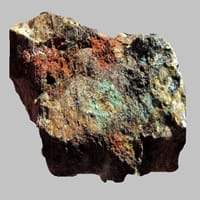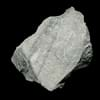Definition
Quartzite is a non-foliated metamorphic rock that forms by the metamorphism of pure quartz Sandstone
Jasperoid is a rare, peculiar type of metasomatic alteration of rocks
Discoverer
Unknown
Unknown
Etymology
From quartz + -ite
From silica, the main mineral content of Jasperoid
Class
Metamorphic Rocks
Sedimentary Rocks
Sub-Class
Durable Rock, Hard Rock
Durable Rock, Medium Hardness Rock
Group
Not Applicable
Not Applicable
Other Categories
Medium Grained Rock, Opaque Rock
Coarse Grained Rock, Fine Grained Rock, Medium Grained Rock, Opaque Rock
Texture
Foliated, Granular
Earthy
Color
Black, Blue, Brown, Green, Light Grey, Purple, White, Yellow
Black, Brown, Colourless, Green, Grey, Pink, White
Durability
Durable
Durable
Scratch Resistant
Yes
Yes
Appearance
Lustrous
Glassy or Pearly
Interior Uses
Countertops, Decorative Aggregates, Flooring, Homes
Decorative Aggregates, Floor Tiles, Homes, Interior Decoration
Exterior Uses
As Building Stone, As Facing Stone, Garden Decoration, Paving Stone
As Building Stone, Garden Decoration, Office Buildings, Paving Stone
Other Architectural Uses
Curbing
Curbing
Construction Industry
Arrowheads, As Dimension Stone, Cement Manufacture, Construction Aggregate, Cutting Tool, for Road Aggregate, Making natural cement, Production of Glass and Ceramics, Rail Track Ballast, Roadstone
As a Flux in the Production of Steel and Pig Iron, As a Sintering Agent in Steel Industry to process Iron Ore, As Dimension Stone, Cement Manufacture, for Road Aggregate, Making natural cement, Manufacture of Magnesium and Dolomite Refractories, Production of Glass and Ceramics, Serves as an Oil and Gas Reservoir rock
Medical Industry
Not Yet Used
Taken as a Supplement for Calcium or Magnesium
Antiquity Uses
Artifacts, Jewellery, Monuments, Sculpture
Artifacts, Jewellery, Monuments, Sculpture
Commercial Uses
An Oil and Gas Reservoir, As armour rock for sea walls, Cemetery Markers, Commemorative Tablets, In aquifers, Laboratory bench tops, Petroleum reservoirs, Soil Conditioner, Source of Magnesia (MgO), Tombstones, Used in aquariums
An Oil and Gas Reservoir, As a Feed Additive for Livestock, Gemstone, Metallurgical Flux, Production of Lime, Soil Conditioner, Source of Magnesia (MgO)
Types
Not Available
Not Available
Features
Generally rough to touch, Is one of the oldest rock
Host Rock for Lead, Traps for subsurface fluids like Oil and Natural Gas., Zinc and Copper Deposits
Archaeological Significance
Famous Monuments
Data Not Available
Data Not Available
Famous Sculptures
Data Not Available
Data Not Available
Pictographs
Not Used
Used
Petroglyphs
Not Used
Used
Formation
Quartzite forms from sandstone and the mineral quartz being put under extreme heat and pressure.
Jasperoid is a rare and peculiar type of metasomatic alteration of rocks. It is formed by extreme alteration of wall rocks within a shear zone which may occur in sediments, andesites, trachytes and basalts.
Mineral Content
Chlorite, Epidote, Hematite, Kyanite, Magnetite, Muscovite or Illite, Quartz
Clay Minerals, Pyrite, Quartz, Sulfides
Compound Content
Aluminium Oxide, CaO, Iron(III) Oxide, MgO, Sodium Oxide, Silicon Dioxide
NaCl, CaO, Carbon Dioxide, Magnesium Carbonate, MgO
Types of Metamorphism
Burial Metamorphism, Cataclastic Metamorphism, Hydrothermal Metamorphism, Regional Metamorphism
Burial Metamorphism, Cataclastic Metamorphism, Regional Metamorphism
Types of Weathering
Biological Weathering, Chemical Weathering, Mechanical Weathering
Not Applicable
Types of Erosion
Chemical Erosion, Coastal Erosion, Water Erosion, Wind Erosion
Not Applicable
Grain Size
Medium Grained
Medium to Fine Coarse Grained
Fracture
Uneven, Splintery or Conchoidal
Conchoidal
Porosity
Less Porous
Less Porous
Luster
Vitreous
Vitreous and Pearly
Cleavage
Indiscernible
Perfect
Specific Gravity
2.6-2.8
2.8-3
Transparency
Transparent to Translucent
Transparent to Translucent
Density
2.32-2.42 g/cm3
2.8-2.9 g/cm3
Resistance
Heat Resistant, Impact Resistant, Pressure Resistant, Wear Resistant
Heat Resistant, Pressure Resistant, Wear Resistant
Deposits in Eastern Continents
Asia
China, India, Israel, Russia, South Korea, Thailand, Turkey
China, India
Africa
Ethiopia, Morocco, South Africa, Zimbabwe
Morocco, Namibia
Europe
England, Italy, Norway, Scotland, Sweden, United Kingdom
Austria, Italy, Romania, Spain, Switzerland
Others
Greenland
Not Yet Found
Deposits in Western Continents
North America
Bahamas, Canada, USA
Mexico, USA
South America
Brazil, Colombia, Venezuela
Brazil, Colombia
Deposits in Oceania Continent
Australia
New Zealand, Queensland, Western Australia
New South Wales, Queensland, Yorke Peninsula
All about Quartzite and Jasperoid Properties
Know all about Quartzite and Jasperoid properties here. All properties of rocks are important as they define the type of rock and its application. Quartzite belongs to Metamorphic Rocks while Jasperoid belongs to Sedimentary Rocks.Texture of Quartzite is Foliated, Granular whereas that of Jasperoid is Earthy. Quartzite appears Lustrous and Jasperoid appears Glassy or Pearly. The luster of Quartzite is vitreous while that of Jasperoid is vitreous and pearly. Quartzite is available in black, blue, brown, green, light grey, purple, white, yellow colors whereas Jasperoid is available in black, brown, colourless, green, grey, pink, white colors. The commercial uses of Quartzite are an oil and gas reservoir, as armour rock for sea walls, cemetery markers, commemorative tablets, in aquifers, laboratory bench tops, petroleum reservoirs, soil conditioner, source of magnesia (mgo), tombstones, used in aquariums and that of Jasperoid are an oil and gas reservoir, as a feed additive for livestock, gemstone, metallurgical flux, production of lime, soil conditioner, source of magnesia (mgo).









